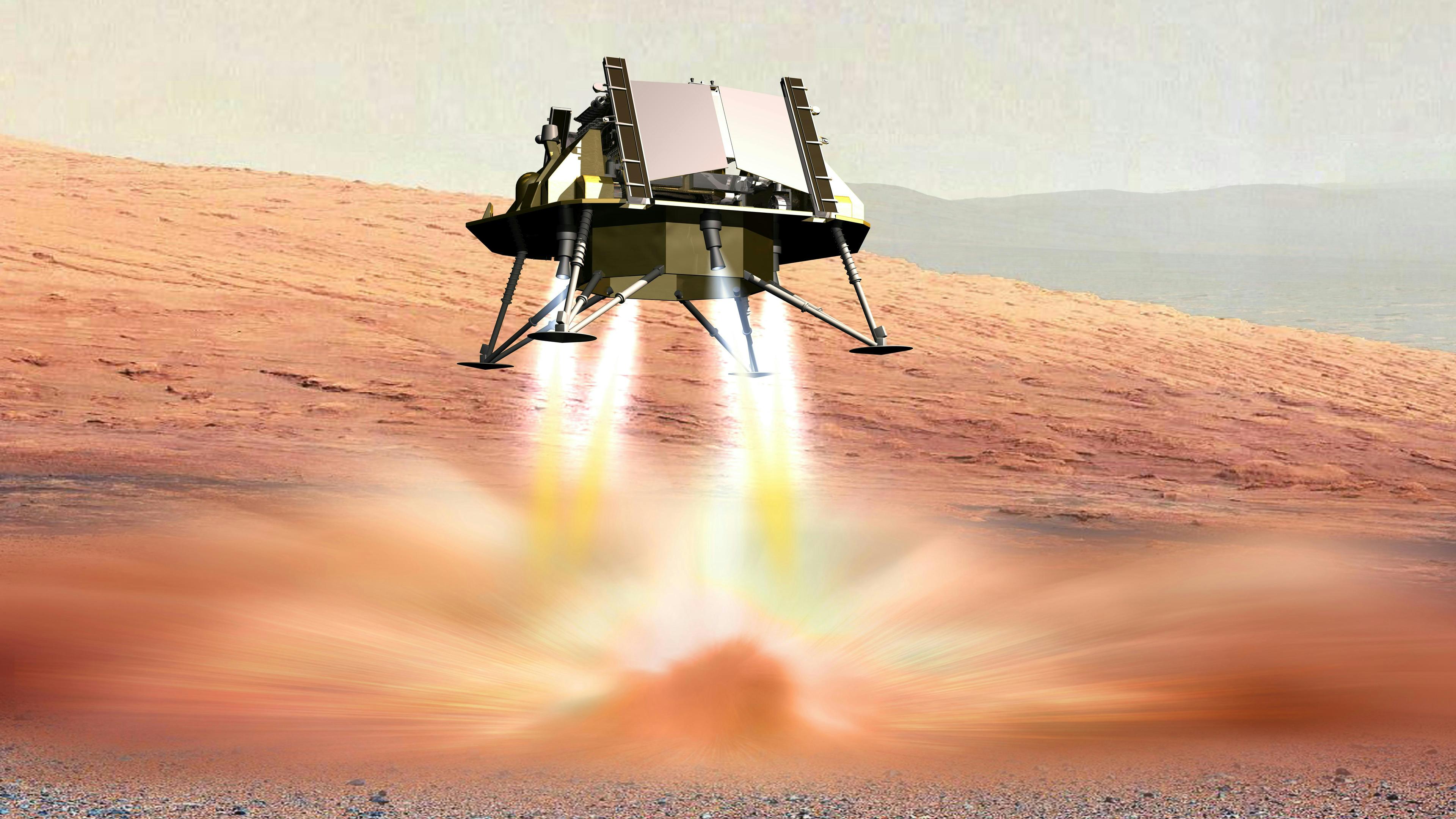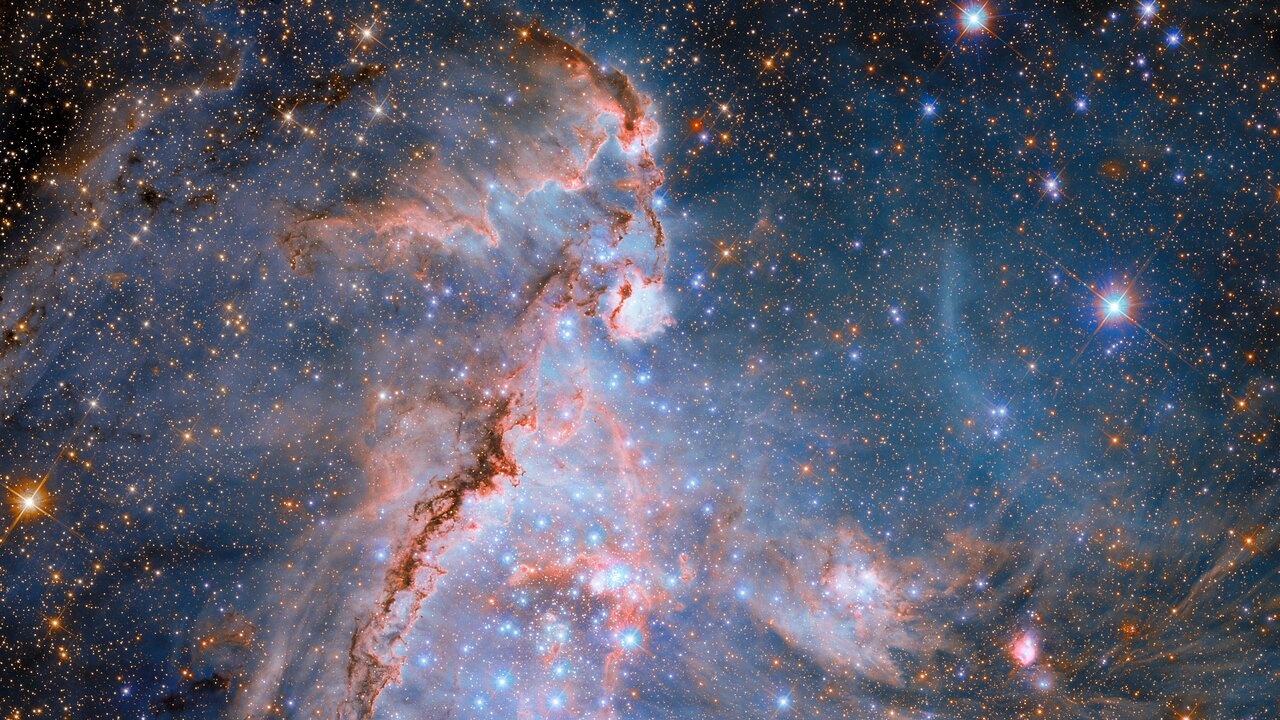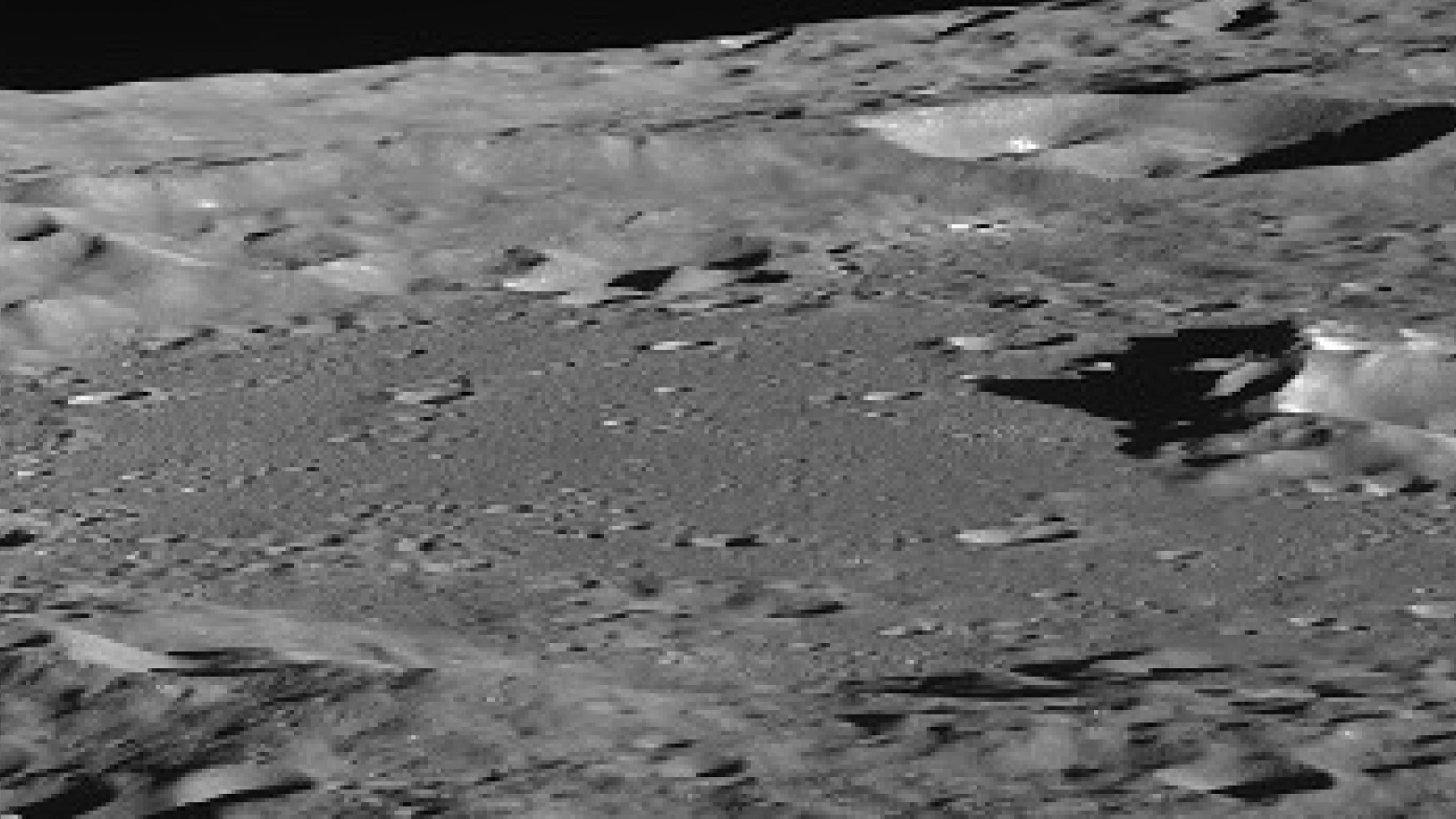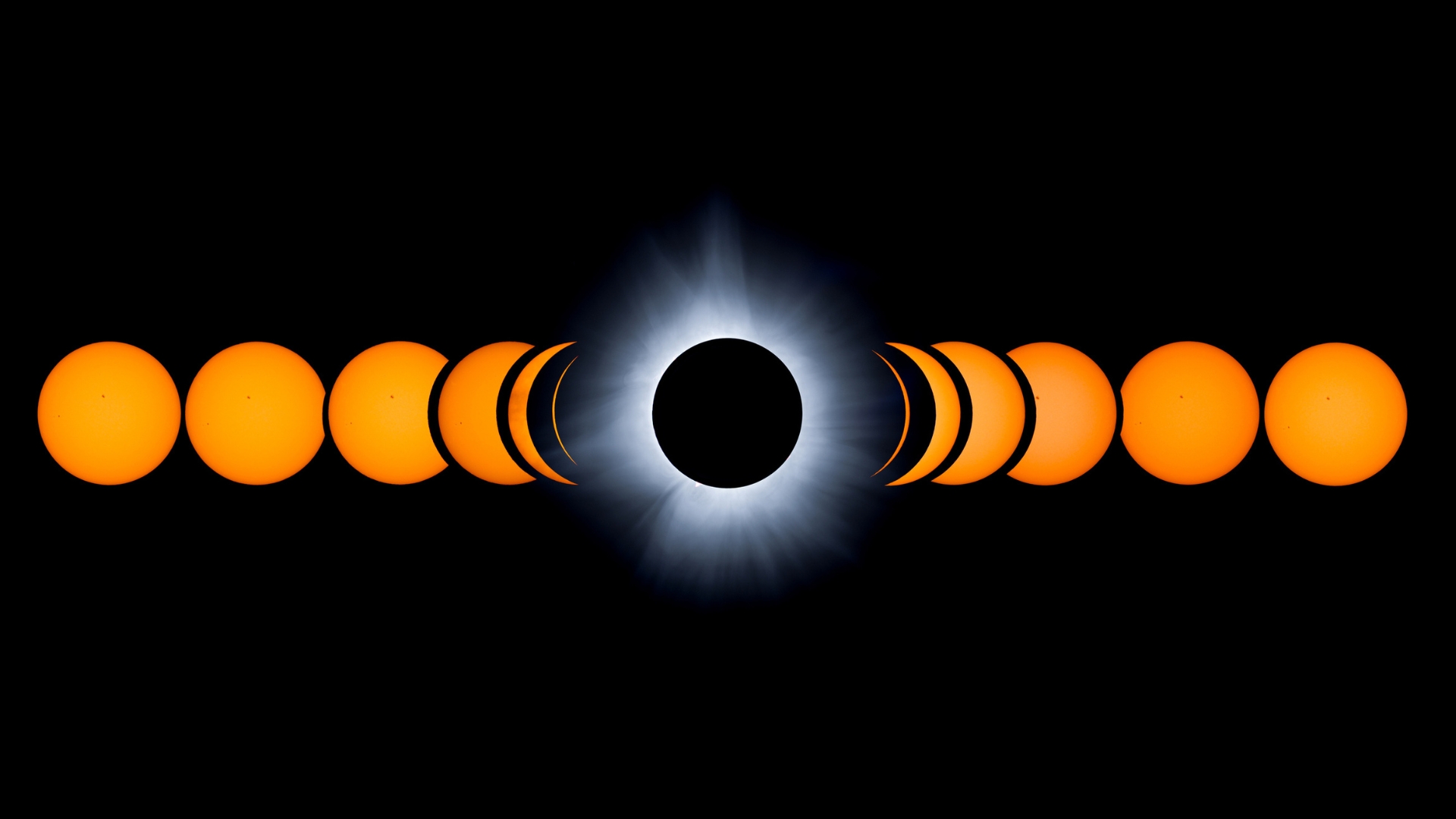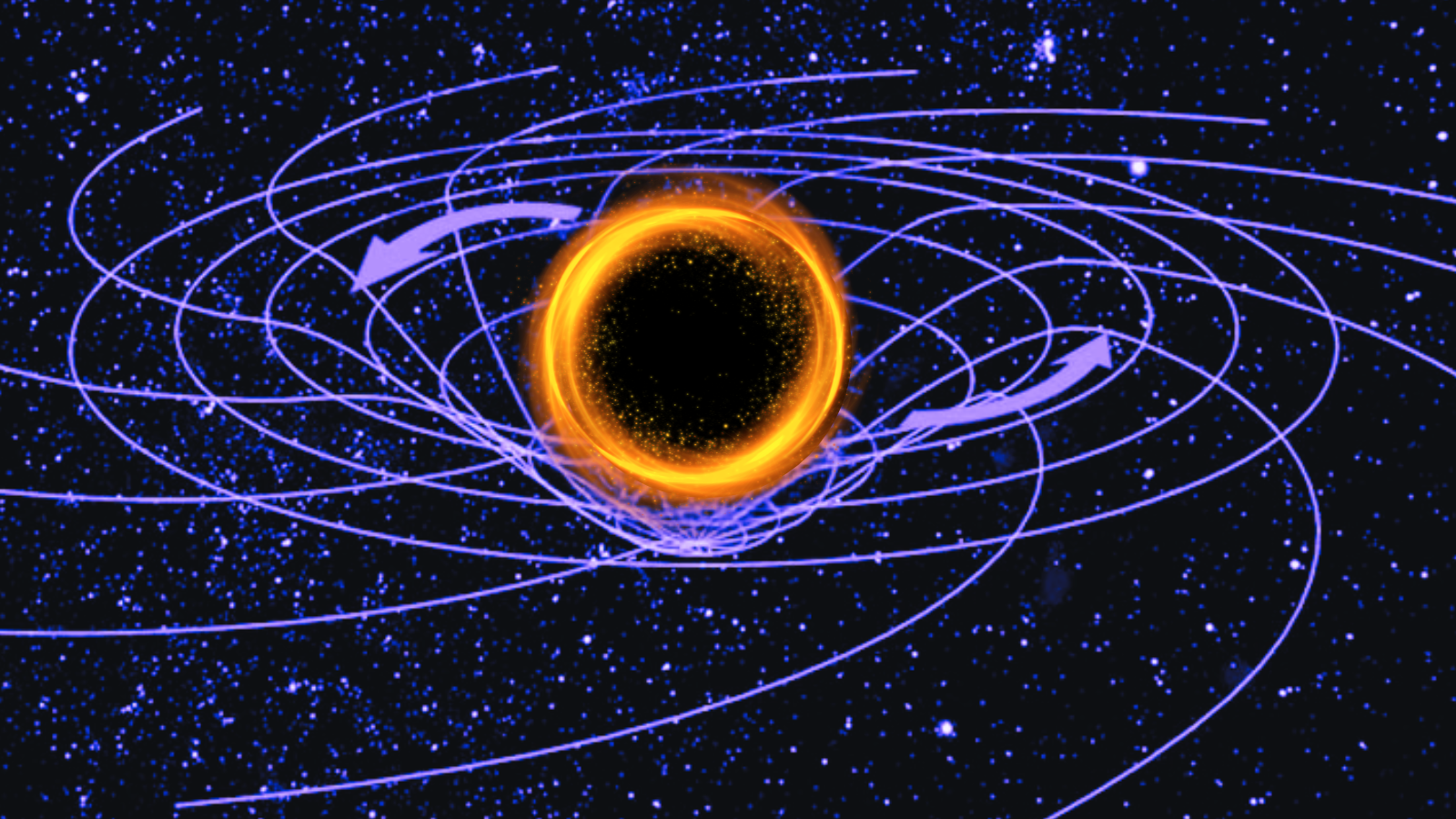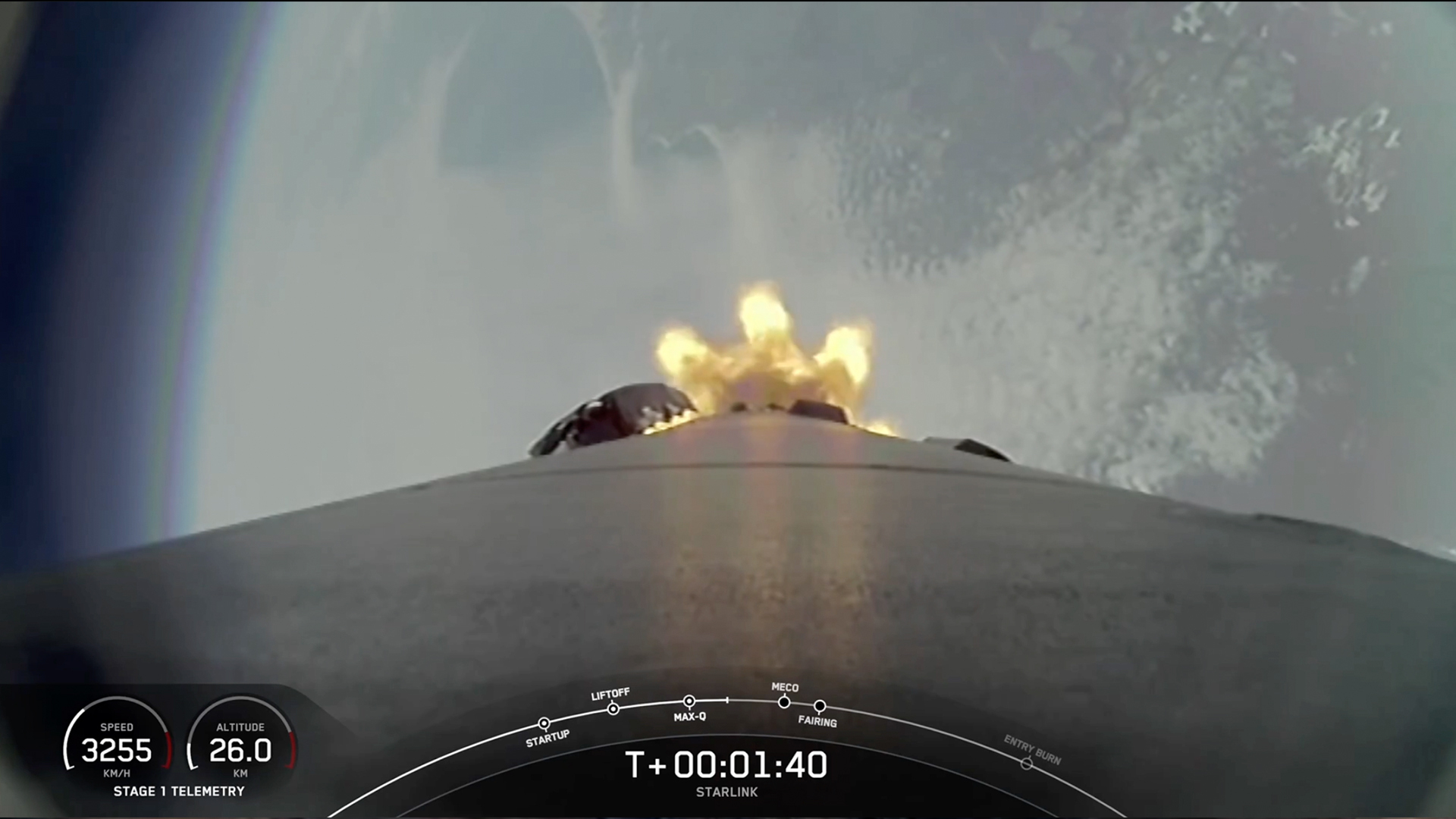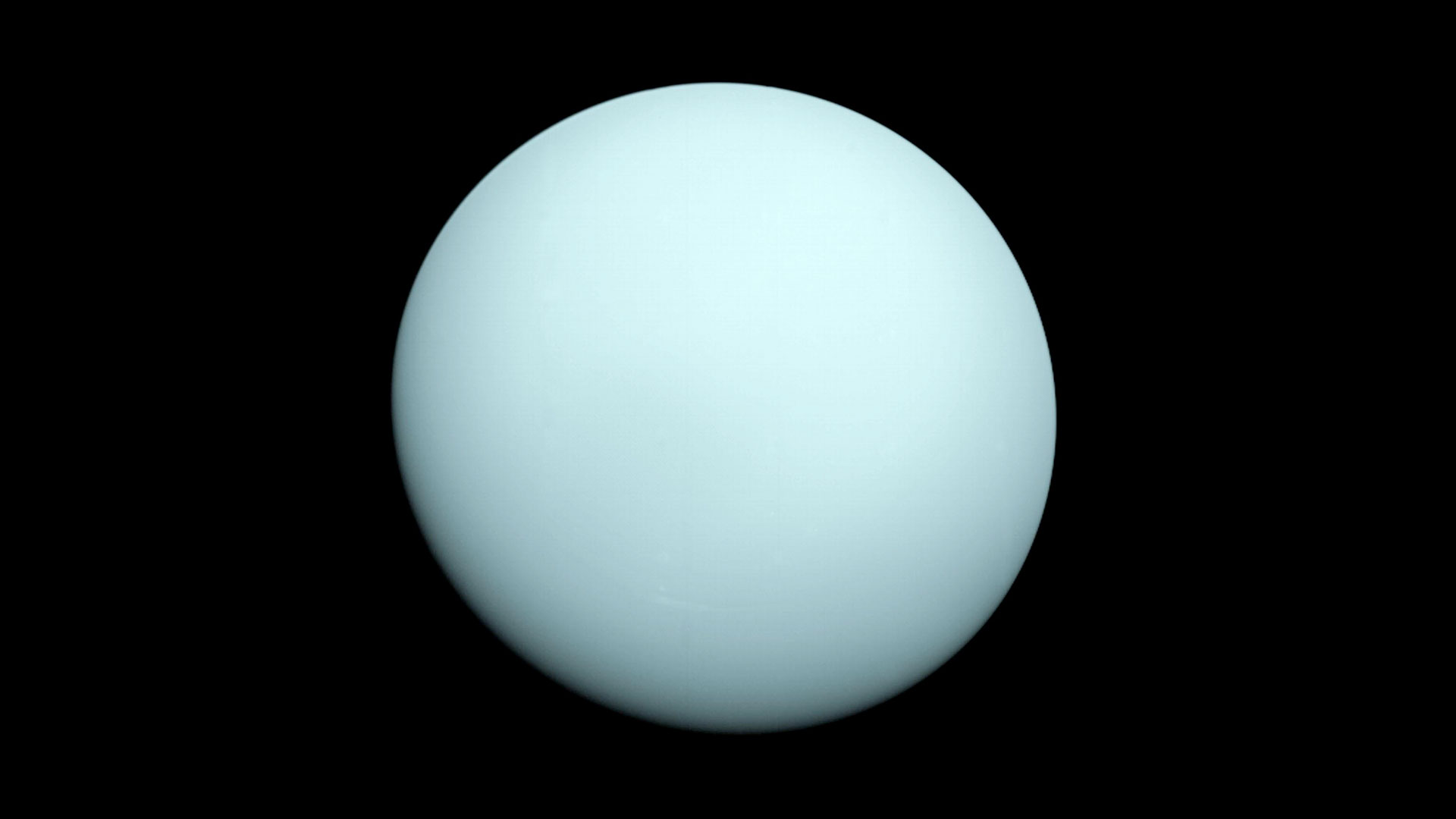Dead stars can have planets, too.
For the first time ever, astronomers have spotted evidence of an exoplanet circling a superdense stellar corpse known as a white dwarf, a new study reports.
"This discovery is major progress, because over the past two decades, we had growing evidence that planetary systems survive into the white-dwarf stage," study lead author Boris Gaensicke, from the University of Warwick in England, said in a statement.
Video: Neptune-Sized Planet Around White Dwarf Discovery Explained
Related: The Strangest Alien Planets in Pictures
"We've seen a lot of asteroids, comets and other small planetary objects hitting white dwarfs, and explaining these events requires larger, planet-mass bodies further out," Gaensicke added. "Having evidence for an actual planet that itself was scattered in is an important step."
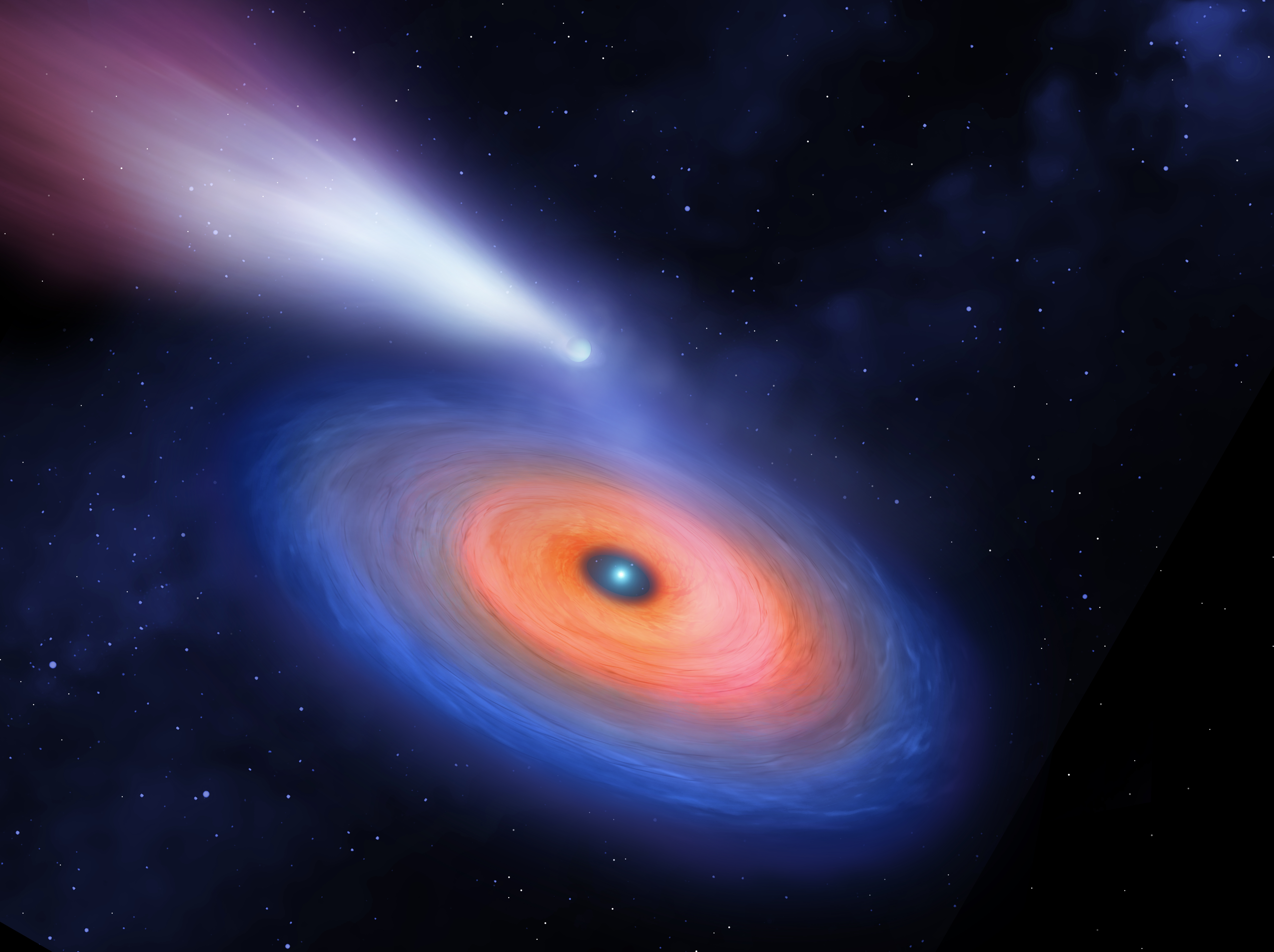
The vast majority of stars in the Milky Way galaxy, including our own sun, will end up as white dwarfs. When these stars finish burning their nuclear fuel, they'll first bloat up as enormous red giants, then eventually collapse down into white dwarfs, which pack about one solar mass into a sphere the size of Earth.
(The main exception is really big stars, those that harbor at least eight times the mass of the sun. These behemoths go supernova when they die, and their remnants generally end up as neutron stars or black holes, objects even denser and more exotic than white dwarfs. Neutron stars are known to host planets, by the way; indeed, the first alien worlds ever discovered orbit a type of fast-spinning neutron star called a pulsar.)
Get the Space.com Newsletter
Breaking space news, the latest updates on rocket launches, skywatching events and more!
Gaensicke and his colleagues studied a white dwarf called WDJ0914+1914, which lies about 2,040 light-years from Earth. In data gathered by the Sloan Digital Sky Survey, the researchers detected emissions of hydrogen, sulfur and oxygen coming from WDJ0914+1914.
That's an odd combination of gases for a white-dwarf system. So, the team trained the European Southern Observatory's Very Large Telescope (VLT) in Chile on WDJ0914+1914. The VLT observations confirmed the presence of all three elements, and suggested that the emissions are coming from a ring of gas around the white dwarf.
"At first, we thought that this was a binary star with an accretion disk formed from mass flowing between the two stars," Gaensicke said. "However, our observations show that it is a single white dwarf with a disk around it roughly 10 times the size of our sun, made solely of hydrogen, oxygen and sulphur. Such a system has never been seen before, and it was immediately clear to me that this was a unique star."
The composition of this disk is similar to that of our solar system's ice giants, Neptune and Uranus, the researchers said. So, it seems that a Neptune-like world — one about four times wider than WDJ0914+1914 itself — is circling the white dwarf once every 10 Earth days.
Related: Our Solar System: A Photo Tour of the Planets
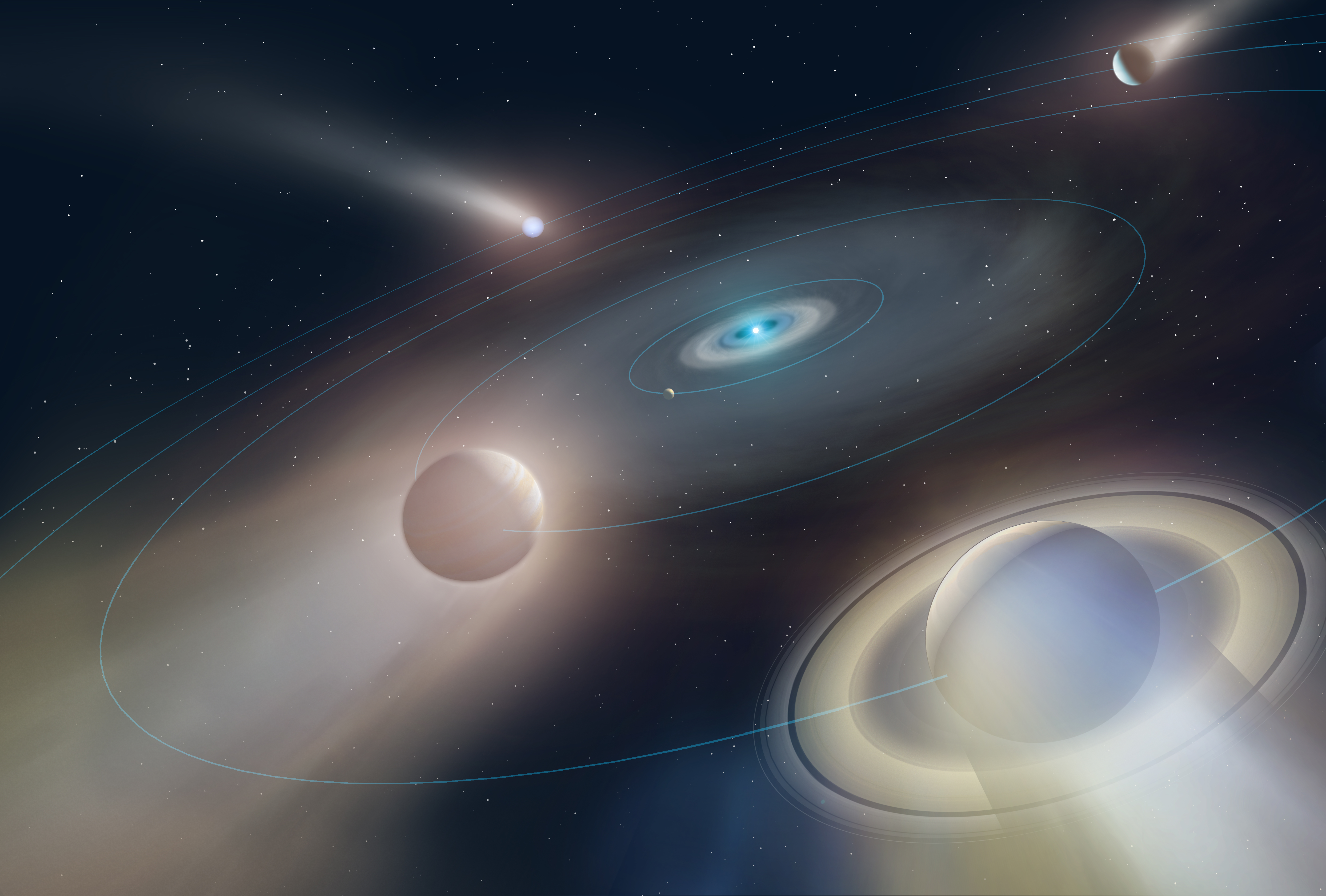
But this planet's days appear to be numbered. Calculations performed by the team indicate that the white dwarf, which has a surface temperature around 50,400 degrees Fahrenheit (28,000 degrees Celsius), is evaporating the alien Neptune at a prodigious rate — about 3,640 tons (3,300 metric tons) per second.
"This star has a planet that we can't see directly, but because the star is so hot it is evaporating the planet, and we detect the atmosphere it is losing," Gaensicke said.
"There could be many cooler white dwarfs that have planets but [lack] the high-energy photons necessary to drive evaporation, so we wouldn't be able to find them with the same method," he added. "However, some of those planets might [be] detectable using the transit method once the Large Synoptic Survey Telescope goes on sky."
The Large Synoptic Survey Telescope is a big observatory under construction in the Chilean Andes; it's scheduled to come online in the early 2020s. (The transit method is a common way to discover alien planets, one made famous by NASA's prolific Kepler space telescope. It involves noticing the tiny dips in a star's brightness caused when a planet transits, or crosses, the star's face.)
To be clear: The researchers did not directly observe a planet around WDJ0914+1914. But the available data point strongly toward its existence, team members said.
"We were stunned when we realized that, when observing hot white dwarfs, we are potentially seeing signatures from extrasolar planet atmospheres," co-author Matthias Schreiber, from the University of Valparaiso in Spain, said in the same statement. "While this hypothesis needs further confirmation, it might indeed open the doors towards understanding extrasolar planet atmospheres."
The new study was published online today (Dec. 4) in the journal Nature. In a companion paper also published today, in the Astrophysical Journal Letters, Schreiber, Gaensicke and colleagues investigate what will happen in our own solar system when the sun exhausts its fuel about 4.5 billion years from now, swelling into a red giant that engulfs Mercury, Venus and likely Earth as well.
The white dwarf that the sun becomes will probably emit enough high-energy photons to evaporate Jupiter, Saturn, Uranus and Neptune eventually, the researchers determined. And some of those planets' constituent gases will likely be detectable by any alien astronomers who may be around and observing our system at that time, just as the material stripped away from the apparent Neptune-size planet circling WDJ0914+1914 is observable to us today.
"In a sense, WDJ0914+1914 is providing us with a glimpse into the very distant future of our own solar system," Schreiber said.
- White Dwarfs: Compact Corpses of Stars
- Death of a Sun-Like Star: How It Will Destroy Earth (Infographic)
- How to Tell Star Types Apart (Infographic)
Mike Wall's book about the search for alien life, "Out There" (Grand Central Publishing, 2018; illustrated by Karl Tate), is out now. Follow him on Twitter @michaeldwall. Follow us on Twitter @Spacedotcom or Facebook.

Join our Space Forums to keep talking space on the latest missions, night sky and more! And if you have a news tip, correction or comment, let us know at: community@space.com.

Michael Wall is a Senior Space Writer with Space.com and joined the team in 2010. He primarily covers exoplanets, spaceflight and military space, but has been known to dabble in the space art beat. His book about the search for alien life, "Out There," was published on Nov. 13, 2018. Before becoming a science writer, Michael worked as a herpetologist and wildlife biologist. He has a Ph.D. in evolutionary biology from the University of Sydney, Australia, a bachelor's degree from the University of Arizona, and a graduate certificate in science writing from the University of California, Santa Cruz. To find out what his latest project is, you can follow Michael on Twitter.
-
rod White dwarfs are reported with exoplanets but not like this report shows, e.g. WD 0137-349 b, WD 1145+017 b (some may have brown dwarf companions). Explaining the origin of a white dwarf with a possible gas giant like Neptune is difficult like explaining hot jupiters. in situ formation with little orbital history change in the systems indicate problems for stellar evolution modeling. The report does not suggest in situ formation though. Glad to see in the report "To be clear: The researchers did not directly observe a planet around WDJ0914+1914. But the available data point strongly toward its existence, team members said."Reply
White dwarfs are now shown to have *accretion disks* or disks, young stars like T Tauri may have accretion disks too. Stellar evolution theory is very interesting. -
AstronomerTim Nice to see the comments back so people can kick around some ideas. Stars, so fascinating there has to be thousands if not millions of unique sub-types. I read on Wikipedia that a white dwarf has a habitable zone that may last 3 billion years. It seems doubtful any life could survive all the crazy events up to that point but a star fairing civilization may like to set up shop on a planet like that. Tidally locked so the sun would never go down.Reply -
AstronomerTim Replyrod said:White dwarfs are reported with exoplanets but not like this report shows, e.g. WD 0137-349 b, WD 1145+017 b (some may have brown dwarf companions). Explaining the origin of a white dwarf with a possible gas giant like Neptune is difficult like explaining hot jupiters. in situ formation with little orbital history change in the systems indicate problems for stellar evolution modeling. The report does not suggest in situ formation though. Glad to see in the report "To be clear: The researchers did not directly observe a planet around WDJ0914+1914. But the available data point strongly toward its existence, team members said."
White dwarfs are now shown to have *accretion disks* or disks, young stars like T Tauri may have accretion disks too. Stellar evolution theory is very interesting.
Rod the wiki page on white dwarfs say that in our case once the sun goes white dwarf then all the planets out to Neptune will be evaporated. However with a life span of 3 billion years perhaps close by systems could introduce new material to the white dwarf system and planet formation could happen in few hundred million years. The possibilities are endless and I think there are going to astonishing surprises if we can just get the science and engineering done to allow us to discover. -
rod ReplyAstronomerTim said:Rod the wiki page on white dwarfs say that in our case once the sun goes white dwarf then all the planets out to Neptune will be evaporated. However with a life span of 3 billion years perhaps close by systems could introduce new material to the white dwarf system and planet formation could happen in few hundred million years. The possibilities are endless and I think there are going to astonishing surprises if we can just get the science and engineering done to allow us to discover.
Rod says - more testing is needed :) Currently we have 4142 confirmed exoplanets according to my canonical reference site, The Extrasolar Planets Encyclopaedia So far, I do not see any *confirmed exoplanets* that are in the habitable zone of a white dwarf star. WDs also have very high surface temperatures, some 30,000 K or so. The wavelength of light chiefly emitted will be very energetic, like UV or more compared to the Sun. Astronomer Tim, you may enjoy this note. Tonight from 1700-1830 EST, I was out viewing 4 Vesta asteroid in Cetus and the waxing gibbous Moon. I tracked 4 Vesta asteroid since 03-Nov-19 in Taurus, moving retrograde now through Cetus. Much fun. Visible in my 10x50 binoculars and also 90-mm refractor at 31x. I used Stellarium and Starry Night to create sky charts for my observation log showing the views and Telrad circles. While viewing in Cetus, I noticed a polar orbiting satellite near 2nd magnitude moving south, and later a meteor streak in the eyepiece while viewing 4 Vesta in Cetus. This is why I like to see a *confirmed* exoplanet in a WD habitable zone :) -
AstronomerTim Reply
Rod hey that's a good observation. I did it twice or three times with a pair of 7x30 binoculars out buy the garbage cans back in the 80's. You just never know until the object has moved with relation to background stars but the light had an icy non-twinkling nature to it. At that time Vesta was in Taurus. Fall before last I observed Uranus with the naked eye for the first time in excellent conditions in the dark mountains of Canada.rod said:Rod says - more testing is needed :) Currently we have 4142 confirmed exoplanets according to my canonical reference site, The Extrasolar Planets Encyclopaedia So far, I do not see any *confirmed exoplanets* that are in the habitable zone of a white dwarf star. WDs also have very high surface temperatures, some 30,000 K or so. The wavelength of light chiefly emitted will be very energetic, like UV or more compared to the Sun. Astronomer Tim, you may enjoy this note. Tonight from 1700-1830 EST, I was out viewing 4 Vesta asteroid in Cetus and the waxing gibbous Moon. I tracked 4 Vesta asteroid since 03-Nov-19 in Taurus, moving retrograde now through Cetus. Much fun. Visible in my 10x50 binoculars and also 90-mm refractor at 31x. I used Stellarium and Starry Night to create sky charts for my observation log showing the views and Telrad circles. While viewing in Cetus, I noticed a polar orbiting satellite near 2nd magnitude moving south, and later a meteor streak in the eyepiece while viewing 4 Vesta in Cetus. This is why I like to see a *confirmed* exoplanet in a WD habitable zone :)
